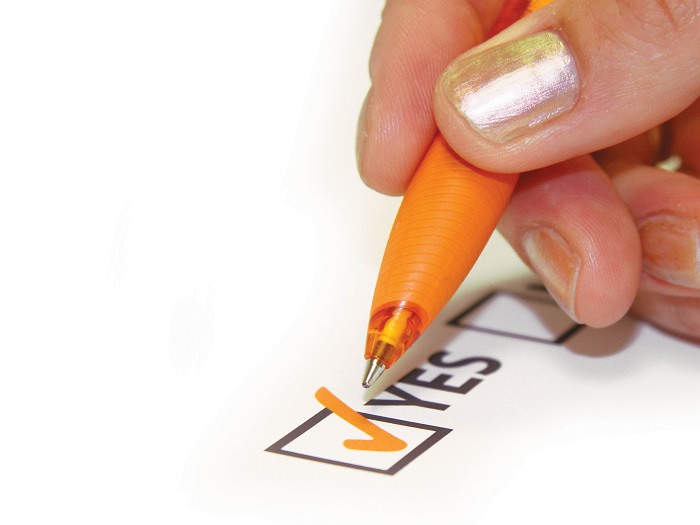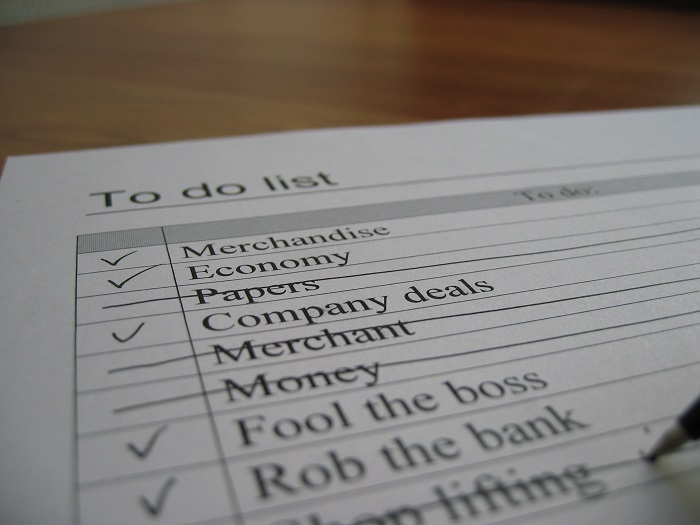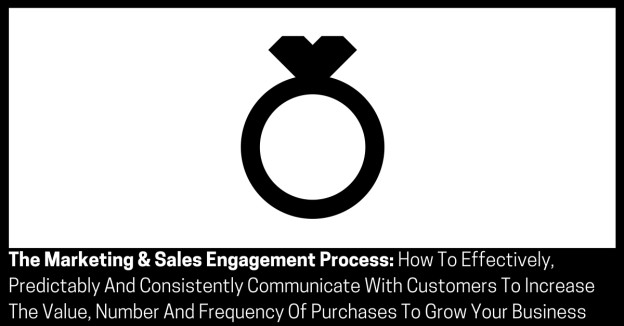Approximate read time: 16 minutes
It’s a situation I’ve seen over and over…
Most bricks-and-mortar businesses have no structured way to effectively, predictably and consistently communicate with customers to increase the value, number and frequency of purchases to grow their business.
This guide is here to help you master marketing and sales retention.
This proven four-step strategy has been used to increase one business’s hospitality trade by an estimated $250,000 within a year.
There are only a few ways to market and sell to prospects and customers:
- Understanding your prospects and customers;
- Increasing the number of prospects, AKA marketing;
- Increasing the number of customers, AKA sales, AKA prospect conversion;
- Increasing the value of customer transactions, AKA upselling;
- Increasing the number of customer transactions, AKA retention;
- Increasing the engagement of prospects and customers to buy more, AKA referrals; and
- Increasing the success of new product, service or solution launches.
It has been said that it’s five times easier and cheaper to retain a current customer than to acquire a new one.
Points 4, 5 and 6 above address this.
The following progressive model may help you visualize ways to achieve these points:
- Enemy;
- Evaluator;
- Endorser;
- Enthusiast; and
- Evangelist.
What do these mean?
- An Enemy is someone who doesn’t like your business due to a bad customer experience;
- An Evaluator is someone who is a first time customer for your business;
- An Endorser is someone who enjoyed their first contact with your business and is now a second time customer;
- An Enthusiast is someone who is a repeat or regular customer of your business; and
- An Evangelist is someone is continuously referring new customers to your business through word-of-mouth.
Prospects and customer can move up or down these steps depending on how they experience your business.
As prospects and customers progress up a step they become more engaged and you create more trust.
And vice-versa, as prospects and customers progress down a step they become less engaged and you remove trust.
Now, let’s turn to how you can bring customers through this sequence for your business and:
- Increase the value, number and frequency of customer transactions, AKA up selling, next selling, down selling and cross selling; and
- Increase the engagement of prospects and customers, AKA retention and loyalty.
Here are the elements:
- STEP 1 Capture Evaluators;
- STEP 2: Create Endorsers;
- STEP 3: Create Enthusiasts; and
- STEP 4: Create Evangelists.
Let’s begin with…

1) Capture Evaluators
…This step is about capturing customer contact details by presenting customers with a gated offer.
A gated offer is a free offer that has a “gate” or entrance attached to it.
In order for customers to get the free offer, they must pass through the entrance.
The cost of passing through the entrance is the prospects contact information, usually in the form of an email address, but it could be a phone number, too.
It’s also useful to capture other segmentation details at this point too so you can send relevant communication of related interests.
At the end of that transaction, you offer the Evaluator the chance to sign up as a member for membership benefits (the gated offer).
In order to do this, you need two things:
- A sign up form; and
- An offer or incentive.
The sign up form could be paper-based, where you or your staff capture your customer’s contacts details in real time and then later enter them into a Microsoft Excel spreadsheet database.
Or to save time and money, the sign up form could be electronic-based, where you or your staff capture your customer contacts details in real time via a smart phone or table and their data is automatically entered into a Microsoft Excel spreadsheet database.
The offer or incentive could be:
- A product, service or solution discount; or a
- A freebie.
It’s ideal for the incentive to be dependent on spend (i.e. attach a condition to the incentive), meaning to redeem the incentive, the customer must make a purchase or spend.
They are forced to spend and this guarantees you revenue.
You ask the customer to buy, but you also give an incentive in the process.
The incentive then becomes an immediate upsell.
This leads to the first decision tree.
If the customer says no to this gated offer, simply offer again when (or if) they purchase again.
Without a contact database, you have no predictable and consistent way to contact and encourage the customer to buy again.
One of the most powerful things about building a direct contact database is the ability to communicate with customers and be proactive about inviting them back.
As the saying goes: “if you want people to attend your party, you must invite them.”
If the customer says yes to this incentive offer, you move to Step 2.
At this step, you should be monitoring:
- The number of signups (first time users).
Of course, the exact details of how to do this are beyond the scope of this guide.
This leads to Create Endorsers…

2) Creating Endorsers
…This step is about converting prospects to purchasing a product, service or solution by engaging the customer database.
This communication has an incentive offer to redeem via a purchase that you promised them in Step 1.
You are starting the process of converting customers to second time purchasers (Endorsers) by presenting them with ongoing incentives.
This offer is intended to get customers to come back as an Endorser.
After you have collected contact details (which is an ongoing process), you need to copy and paste the contact details from your database into your personal mobile phone and send an engagement communication to your customers.
Before we begin with specifics, it’s worth giving some context…
Increasing the value, number and frequency of customer transactions and increasing the engagement of prospects and customers is about getting your business and product, service or solution into prospects’ and customers’ hands.
Advertising works.
John Wanamaker once said “half the money I spend on advertising is wasted; the trouble is I don’t know which half.”
Amongst marketers and sales people, there has been a long winded battle, which has never been won, about what is better…
Brand awareness or direct response…
I’m going to give you a third option which says both, used in combination.
Brand Awareness
Brand awareness could be described as the extent to which prospects and customers are aware of and familiar with your business.
Brand awareness relies on repetition, familiarity, relationship, credentials, reputation, association, comfort and so on.
In other words, prospects and customers know, like and trust you and you can deliver on promise.
The theory goes that when making a purchasing decision, prospects and customers will choose the products, service or solution that fits those criteria.
So, with brand awareness, you want to have your business familiar to prospects and customers.
The problem with brand awareness alone is that it doesn’t ask for a sale like direct response does.
In addition:
- It takes a long time for it to work;
- It takes a lot of money to work (especially with a lot of competitors); and
- It is hard to measure until later.
Direct Response
Direct Response could be described as asking for a specific, measured direct response from a prospect of customer by a business.
Direct Response relies on sending a communication that explicitly asks for a sale.
The theory goes that when making a purchasing decision, you will choose a product, service or solution that asks you to purchase.
So with Direct Response, you want to be making sales offers.
The problem with direct response alone is that it doesn’t build and goodwill.
In addition, it:
- Can annoy people and drive them away; and
- Can be untargeted.
Deposits and Withdrawals
Stephen Covey explained a concept called the Emotional Bank Account in his book The 7 Habits of Highly Effective People.
The concept describes how building trust works in human interactions.
It is analogous to a bank account where deposits and withdrawals of money can be given and taken.
If a bank account gets filled, it can lead to more trust and likewise, if it gets overdrawn it can lead to a diminishing of trust.
The same principle applies to marketing and sales.
And we know marketing and sales only happens when prospects and customers know, like and trust your business.
Selling is about relationships, even if you don’t know prospects and customers personally.
Relationships here is defined as the way in which a market and a business are connected.
And the relationship should be mutually beneficial so that the sum is bigger than the individual parts.
This is about delivering value.
Relationships are like bank accounts that contain currencies, in this case money and having their problem solved, and has deposits and withdrawals of either of those currencies.
As a business, you want to build a reserve of credit with prospects and customers to draw upon before you ask them to buy.
You don’t want to ask them to buy and overdraw your account with them.
In the context of marketing and sales, Covey suggests there are a few things that build up deposits:
- Understanding people’s needs;
- Providing value related to their needs; and
- Apologising when you push too hard for a sale.
This is about building goodwill and giving value.
We will discuss specifics soon.
Again in the context of marketing and sales, Covey suggests there are a few activities that make withdrawals:
- Trying to sell a product, service or solution; and
- Raising any sales objection.
It’s best to balance these and at the start; give before you take.
Old deposits evaporate, so keep making deposits.
In other words, fill the “value account” with deposits of value before you make a withdrawal by asking for a sale via direct marketing calls to action.
This is what I mean by give and take – deposits and withdrawals.
But there is no need to micro-manage this process and keep tallies on who has done what.
This is about the overall balance and sense of deposit and withdraw ratio.
It’s always best to err on the side of giving too many deposits.
When you first start a relationship, your deposit balance is at zero, so add some deposits (i.e. offer value) before take (i.e. make a sales offer).
Otherwise, you’ll go into overdraft very quickly.
In other words, stay out of the negative by providing more value than taking.
And don’t ask for sales, until you have given value.
In other words, don’t ask for marriage on the first date.
This is how people move up and down the progressive model discussed.
…So, back to this step.
You should communicate the following:
- The incentive and offer; and
- A call to action to redeem.
You see here, this communication provides both brand awareness (deposits in the form of incentive and offer) and direct response (withdrawals in the form of call to action).
It’s asking for the sale, but also giving value at the same time.
You must include an opt-out option to comply with the SPAM Act.
You can read the Spam Act 2003 here: http://www.comlaw.gov.au/Series/C2004A01214.
NOTE: What follows is not legal advice.
But in essence you need:
- Gained consent for commercial communication;
- Clear identification of who sent the communication; and
- The ability to stop any further communication.
You need to remove opt-outs immediately to comply with the SPAM Act.
Be warned, this can be time consuming.
Although required by law, opting-out is a strategic marketing choice.
If customers are not engaged with your communication, you are spending money on unqualified customers.
Delete them from your contact database.
You may feel uneasy about doing this, as you would have invested to market and sell to them previously, but if they are not engaged with you any more, they no longer have a gain or pain they are motivated to solve.
It’s also a good idea to send different segments, different offers related to their interests.
And it’s best to send a communication at least weekly to stay relevant to you customers, without being over-bearing.
This could be a split of offers based on their demographics.
There is also a gap between the time of sending the offer and when they can redeem the offer.
This gap in time can also increase dopamine, one of the most addictive naturally occurring human hormones!
Dopamine can be created by the expectation of new experiences (in this case a sales offer).
This leads to the second decision tree:
If the customer says no to the engagement communication, you need to repeat this step indefinitely as this current incentive is obviously not for them. Keep sending engagement communication to them until they say yes or opt-out or you decide to stop.
If the customer opts out, they were not qualified.
We’ll discuss this later on in this guide.
If the customer says yes to the engagement communication, this will be demonstrated by them redeeming the incentive by purchasing a product, service or solution.
They have now become an Endorser.
So what is the mechanism to do this communication?
SMS.
You may be wondering why not use:
- A custom smart phone app;
- A custom loyalty card; or
- Email.
Let’s discuss these in turn…
Mobile apps have many great advantages, but they also have several disadvantages that makes SMS superior.
Here are the key ones:
- They are very expensive to develop with a high setup cost;
- They add extra resistance for customers, by requiring customer to download and install the app;
- They are reactive because customers can uninstall them at any time and turn off push notifications; and
- They can be perceived as low-value as there is no investment from the sender.
Loyalty cards have many great advantages, but they also have several disadvantages that makes SMS superior.
Here are the key ones:
- They have no mechanism to constantly communicate with customer; and
- They are easy to forget, to lose and to use.
And emails have many great advantages, but they also have several disadvantages that makes SMS superior.
Here are the key ones:
- They have spam filters;
- They are the most crowded direct communication channel, behind phone calls and in person meeting; and
- They are less personalized as customers can differentiate bulk email.
In addition:
- The average person receives 121 emails per day; and
- The average email open (read) rates range from 28.85% (for hobbies) to 12.87% (for Daily Deals).
Compare this to SMS, where:
- The average person receives 41.5 SMS per day; and
- The average SMS open (read) rate is 98%.
That’s three times less communication with 3-6 times better open rates!
At this step you should be monitoring:
- The number of SMS redemptions.
Of course, the exact details of how to do this are beyond the scope of this guide.
This leads us to Create Enthusiasts…

3) Create Enthusiasts
…This step is about creating Enthusiasts (or your regulars) and is optional.
When a customer (as an Endorser) redeems the incentive with a purchase, you want to give them a loyalty card, either physically or electronically.
When they are presented with the loyalty card, also give them a stamp, either physically or electronically.
You will explain to them about the loyalty card, in particular they must redeem a certain amount of incentives to become a VIP member.
A good number of redemptions are anything from 4-10 depending on your product, service or solution pricing and offer.
A VIP incentive could be:
- An exclusive gift;
- Recognition or status;
- Meeting staff;
- Priority access;
- Extra customer care;
- And much, much more…
Generally it’s better to offer a-money-can’t-buy incentive as described above.
This is also beneficial as it doesn’t take away from your bottom line and doesn’t get confused with your regular members’ incentives.
These “gifts” should be exclusive and scarce in nature and only available to VIP members, not regular members or non-members.
As Endorsers return and stamps their card, either physically or electronically, your checkout staff should be building rapport and a connection with them through:
- Talking about things they like;
- Talking about opinions; and
- Talking about feelings.
This process of getting the customer to show their loyalty card, psychologically demonstrates to them that they are becoming regular users of your product, service or solution.
Very powerful!
Here we come to the third decision tree…
If customers do not complete the loyalty process and do not become VIPs, then you need to repeat this step until they say yes or opt-out or you decide to stop.
If customers do complete the loyalty process and become a VIP, then on the last stamp you give them VIP member status.
This could be any of the VIP incentives mentioned earlier.
At this step you should be monitoring:
- The number of loyalty cards issued (or downloaded);
- The number of stamps given and at what stage;
- The number of VIP cards issued (or downloaded); and
- The attrition rate of loyalty cards.
Of course, the exact details of how to do this are beyond the scope of this guide.
This leads us to Create Evangelists…

4) Create Evangelists
…This step is about creating Evangelists by encouraging your members to invite friends through word-of-mouth and incentives in a predictable and consistent way.
You want your Evangelists to bring or recommend their friends to your business.
When an Evangelist recommends their friends, the new prospects then start at Step 1 as an Evaluator and they begin the same process their referring friend started.
This is how you powerfully grow your customer based organically without any need for external advertising or lead generation.
So what is the mechanism for this?
Simply ask your members to bring a friend for an incentive.
At this step you should be monitoring:
- The number of new prospects brought by Evangelist’s.
Of course, the exact details of how to do this are beyond the scope of this guide.

Take Action
You’ve made it…
You now have a solid plan for customer retention.
That’s the full Marketing & Sales Engagement Process, and it will be more than enough for you to get started on your own.
You can get the printed illustrated Process Map of this and 20 others for free, here
And if you’re serious about marketing and selling more, the logical next step is to contact me to help you do it yourself, have me do it with you, or have it all done for you.
This maybe the momentum you need to get great marketing and sales results.
Now let’s learn about The Testimonial Collection Process.
Or do you simply want more like this?
Join below to be notified immediately about new content and more. No annoying daily emails and no spam – just good content when it’s posted.

